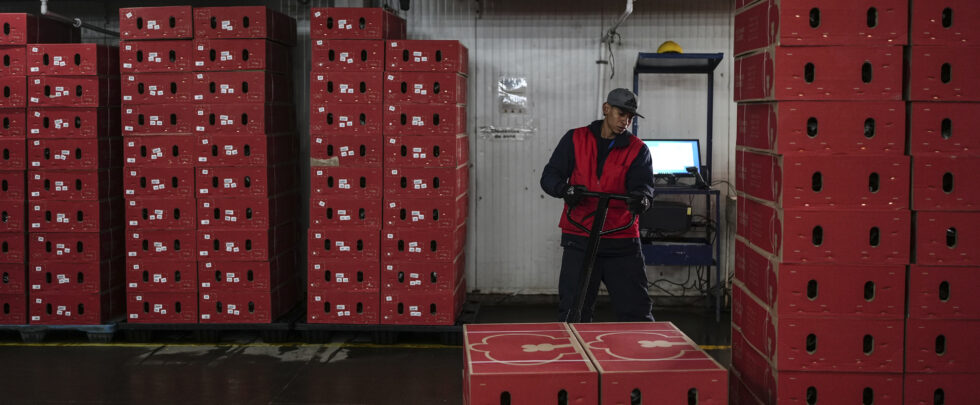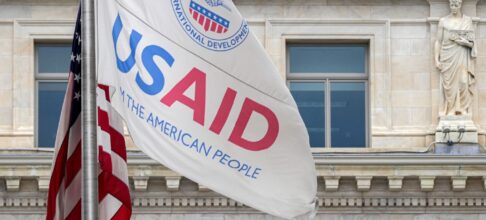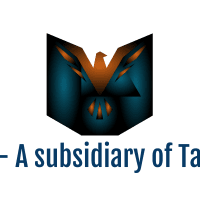 Here’s what they are and what you need to know about them. Tariffs are a tax on imports.
Tariffs are typically charged as a percentage of the price a buyer pays a foreign seller.
In the United States, tariffs are collected by Customs and Border Protection agents at 328 ports of entry across the country.
U.S. tariff rates vary: They are generally 2.5% on passenger cars, for instance, and 6% on golf shoes.
Tariffs can be lower for countries with which the United States has trade agreements.
Here’s what they are and what you need to know about them. Tariffs are a tax on imports.
Tariffs are typically charged as a percentage of the price a buyer pays a foreign seller.
In the United States, tariffs are collected by Customs and Border Protection agents at 328 ports of entry across the country.
U.S. tariff rates vary: They are generally 2.5% on passenger cars, for instance, and 6% on golf shoes.
Tariffs can be lower for countries with which the United States has trade agreements.For example, most goods can move among the United States, Mexico and Canada tariff-free because of Trump’s US-Mexico-Canada trade agreement. Mainstream economists are generally skeptical of tariffs, considering them a mostly inefficient way for governments to raise money and promote prosperity.
Story continues below advertisement
President Donald Trump, a proponent of tariffs, insists that they are paid for by foreign countries.
In fact, it is importers — American companies — that pay tariffs, and the money goes to the U.S. Treasury.
Those companies, in turn, typically pass their higher costs on to their customers in the form of higher prices.That’s why economists say consumers usually end up footing the bill for tariffs. Still, tariffs can hurt foreign countries by making their products pricier and harder to sell abroad. Foreign companies might have to cut prices — and sacrifice profits — to offset the tariffs and try to maintain their market share in the United States. Yang Zhou, an economist at Shanghai’s Fudan University, concluded in a study that Trump’s tariffs on Chinese goods inflicted more than three times as much damage to the Chinese economy as they did to the U.S. economy.

Manitoba farmers brace for price drops amid Trump tariff threat
Story continues below advertisement
“Tariffs are the greatest thing ever invented,’’ Trump said at a rally in Flint, Michigan, during his presidential campaign.
As president, Trump imposed tariffs with a flourish — targeting imported solar panels, steel, aluminum and pretty much everything from China.
“Tariff Man,” he called himself.

Get daily National news
Get the day's top news, political, economic, and current affairs headlines, delivered to your inbox once a day.Tariffs are intended mainly to protect domestic industries
Story continues below advertisement
Before the federal income tax was established in 1913, tariffs were a major revenue driver for the government.
From 1790 to 1860, tariffs accounted for 90% of federal revenue, according to Douglas Irwin, a Dartmouth College economist who has studied the history of trade policy.

‘Trump is trying to divide us’: Premier Ford defiant as U.S. tariff threats loom
Story continues below advertisement
Tariffs can also be used to pressure other countries on issues that may or may not be related to trade.
In 2019, for example, Trump used the threat of tariffs as leverage to persuade Mexico to crack down on waves of Central American migrants crossing Mexican territory on their way to the United States.
Economists generally consider tariffs self-defeating
Story continues below advertisement
The European Union, for example, punched back against Trump’s tariffs on steel and aluminum by taxing U.S. products, from bourbon to Harley-Davidson motorcycles.

Trump has threatened a 10% tariff on Canadian oil – how will it impact the industry?
Story continues below advertisement
Worse, the retaliatory taxes imposed by China and other nations on U.S. goods had “negative employment impacts,’’ especially for farmers, the study found.
These retaliatory tariffs were only partly offset by billions in government aid that Trump doled out to farmers. The Trump tariffs also damaged companies that relied on targeted imports.
If Trump’s trade war fizzled as policy, though, it succeeded as politics. The study found that support for Trump and Republican congressional candidates rose in areas most exposed to the import tariffs — the industrial Midwest and manufacturing-heavy Southern states like North Carolina and Tennessee.

B.C. prepares for Trump’s 25 per cent tariffs













